by Melanie Taylor | Jul 8, 2018
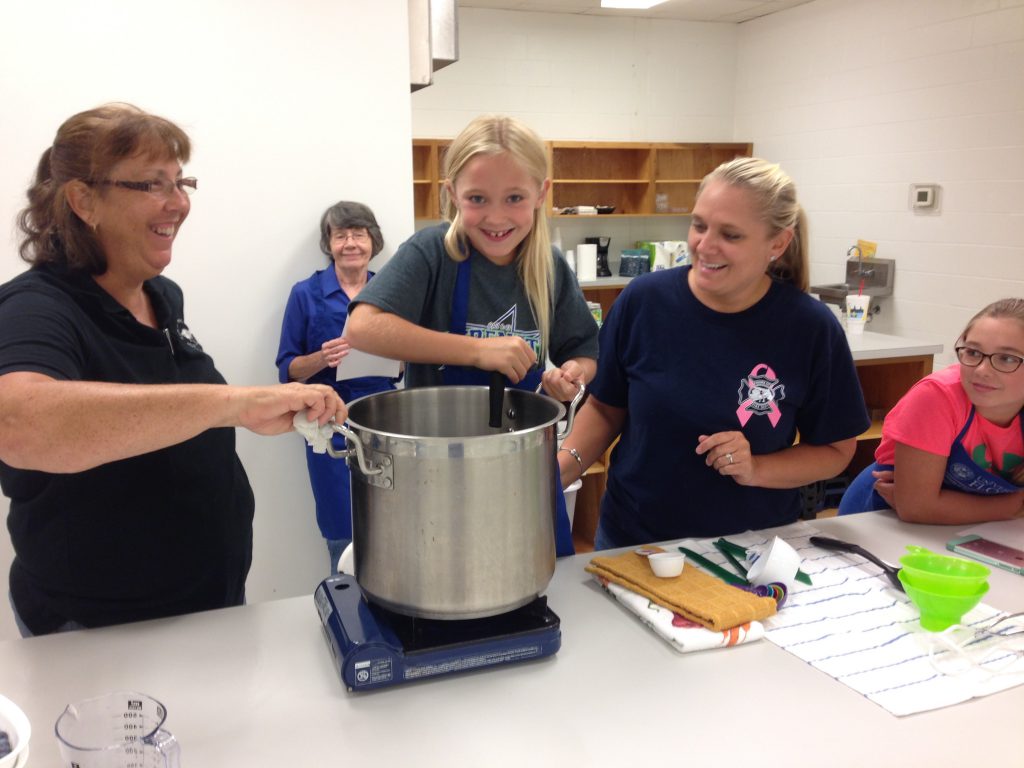
Youth learn food preservation skills. Photo source: Melanie Taylor
At this point in the summer, many parents are at a loss for what to do to keep their children engaged and “off the couch.” How about a focus on healthy eating and food preservation? If you have a backyard garden be sure to pick the fruits and vegetables at their peak readiness. If you do not have a garden make a family trip to the local farmers market and/or a local u-pick farm.
Of course, fresh fruits and vegetables are full of nutrition and taste, but if you have or buy more than your family can eat in a few days’ time, be sure to make preparations to teach your children how to preserve those foods to eat later in the year. There is nothing more enjoyable than having fruit jam on biscuits or summer vegetables in your soup during the cold depths of winter.
There are six different methods of food preservation to teach your children. They are boiling water/water bath canning, making jam, pickling, freezing, drying, and pressure canning. The easiest method being freezing and the most complex and time consuming being pressure canning. No matter which ones you choose to teach your children be sure to follow valid recipes and procedures. Family and Consumer Science Extension Agents always recommend using the most current recipes and procedures from The National Center for Home Food Preservation, which are maintained at https://nchfp.uga.edu/. The National Center for Home Food Preservation is your source for current research-based recommendations for most methods of home food preservation. The Center was established with funding from the Cooperative State Research, Education and Extension Service, U.S. Department of Agriculture (CSREES-USDA) to address food safety concerns for those who practice and teach home food preservation and processing methods. Many of the recipes are available for free on the website, or you can order the 6th edition of the “So Easy to Preserve” food preservation book at https://setp.uga.edu/.
Specific to children, there is also a Put It Up! Food Preservation for Youth curriculum through the University of Georgia, which is a series of informal educational lessons that guide youth to explore and understand the science of safe food preservation. This free curriculum can be found online at https://ugeorgia.ca1.qualtrics.com/jfe/form/SV_a5Y4IfBZ2Vh0EIt after a quick questionnaire of how you plan to use the curriculum.
Teaching these food preservation skills to your children will be a fun-filled and very educational opportunity. Be sure to use the above resources to assist you in the food safety methods to be certain your products are safe for consumption. Enjoy this special time in the garden and kitchen with your children this summer.
Resources:
National Center for Home Food Preservation https://nchfp.uga.edu/
“So Easy to Preserve” https://setp.uga.edu/
Put It Up! Food Preservation for Youth https://ugeorgia.ca1.qualtrics.com/jfe/form/SV_a5Y4IfBZ2Vh0EIt

by Bill Mahan | Dec 4, 2012
A s a dog owner, I’ve always been told to not let your dog have chocolate because it is poisonous for them to eat. Well, a question that I’ve had for years is “How much chocolate can a dog eat before it has a health problem?”
s a dog owner, I’ve always been told to not let your dog have chocolate because it is poisonous for them to eat. Well, a question that I’ve had for years is “How much chocolate can a dog eat before it has a health problem?”
My curiosity finally got the best of me (I must be a cat) and I decided to do some research on the topic of dogs and chocolate. I have to be honest: I was a bit surprised by the information I found.
The following information is from the November 2012 “Your Dog” newsletter written by the Cummings School of Veterinary Medicine at Tufts University.
As it turns out, it is not the chocolate that is the potential problem; it is a caffeine-like chemical found in chocolate called theobromine that is the troublemaker. Theobromine can cause symptoms in a dog that are similar to those we can experience during a major caffeine overdose. Symptoms include: agitation, hyper-excitation, and possible seizures.
However, as you can read in the table below, the size of your dog and the type of chocolate they get into are major factors in determining the impact of that “stolen” chocolate snack on your pet! For example, if you have a 30-pound dog and they “steal” an 8-ounce milk chocolate candy bar, they should be okay unless they are diabetic or have other health issues.
How Much Chocolate is Toxic?
| Dogs Weight |
Toxic Amount of Milk Chocolate |
Toxic Amount of Dark Chocolate |
|
5 pounds
|
4 ounces
|
0.5 ounce
|
|
10 pounds
|
8 ounces
|
1.0 ounce
|
|
20 pounds
|
1.0 pound
|
2.5 ounces
|
|
30 pounds
|
2.0 pounds
|
3.25 ounces
|
|
40 pounds
|
2.5 pounds
|
4.5 ounces
|
|
50 pounds
|
3.0 pounds
|
5.5 ounces
|
|
60 pounds
|
4.0 pounds
|
7.0 ounces
|
|
70 pounds
|
5.0 pounds
|
8.5 ounces
|
|
80 pounds
|
6.0 pounds
|
10.0 ounces
|
|
100 pounds
|
8.0 pounds
|
13.0 ounces
|
|
120 pounds
|
10.0 pounds
|
1 pound
|
On the other hand, if you have a small dog, that 8-ounce chocolate candy bar that went missing can be a real problem! In my case, my dog, Sienna, weighs 12 pounds and my daughter loves dark chocolate so I know there is going to be dark chocolate around the house. A few dark chocolate Kisses lying around where Sienna can get them could turn into a major problem!
So, be very careful if you have chocolate treats, especially dark chocolate, around the house and you have dogs “running” around!
Other potential problem foods for your dog include onions and garlic. Both of these foods can cause hemolytic anemia (destruction of red blood cells) in your dog. As with chocolate, while it is better to keep these items out of your dog’s reach, your canine friend would need to eat a “large” amount of onion or garlic to become sick.
However, what you do need to be extremely careful about is making sure your dog never gets into any grapes or raisins, both of which are associated with kidney failure in dogs! Even just a few may be enough to make your dog ill.
As always, if you have any questions about your pets, contact your local veterinarian for answers.
References:
‘Your Dog – The Newsletter for caring dog owners.’ Written by Cummings School of Veterinary Medicine at Tufts University; November 2012, Vol. XVIII, Number 11.
by Kendra Hughson | Nov 21, 2012
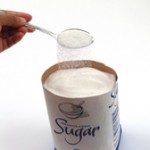 From Halloween to the New Year, most people struggle to control their eating. The average American gains about one pound during the holiday season. Some gain even more. While this is less than the holiday weight gain amounts that get widely reported, most people never lose this excess weight so the pounds accumulate, resulting in obesity or overweight.
From Halloween to the New Year, most people struggle to control their eating. The average American gains about one pound during the holiday season. Some gain even more. While this is less than the holiday weight gain amounts that get widely reported, most people never lose this excess weight so the pounds accumulate, resulting in obesity or overweight.
The 2010 USDA Dietary Guidelines for Americans suggest reducing fat, sodium, and added sugar. Simple substitutions can make your traditional holiday recipes lower in fat and calories without losing the taste. With a little bit of planning and modification, you can create a healthier version of many holiday foods and recipes.
A recipe is actually a chemical formula and each ingredient has a function that results in the taste, texture, and appearance of the end product. It’s important to know what each ingredient does, how it can be changed, and by how much in order to keep the final product as close to the original as possible.
Research has shown that when more fiber is added, when fat and cholesterol is reduced, and/or when less sugar and salt are used, most people either don’t notice much difference between the original and healthier version or they accept the new product. So try out some of the suggestions below to makeover your favorite recipes. Don’t tell anyone you changed it to see if they notice. Contact the UF/IFAS Extension office in your county for more information.
To decrease fat and calories:
| Instead of this: |
Try this: |
| Shortening, butter, margarine |
Use ¼ less. Replace melted butter or margarine with equal amounts of liquid oil. When baking, replace half of the butter, shortening, or oil with applesauce or prune puree (may reduce baking time by 25%). |
| Full fat sour cream, cottage cheese, Ricotta cheese or cream cheese |
Use non-fat or low-fat varieties. Use part-skim Ricotta cheese. |
| Eggs |
Use egg whites (usually 2 egg whites for every egg) or use ¼ cup egg substitute. |
To decrease sugar:
| Instead of this: |
Try this: |
| Sugar |
Reduce sugar by ¼ to ⅓ in baked goods and desserts. Add cinnamon, vanilla, or almond extract for flavoring. Do not remove sugar in yeast breads. Experiment with artificial sweeteners. |
| Syrup |
Use pureed fruit, such as no-sugar-added applesauce, or sugar-free syrup |
To decrease sodium:
| Instead of this: |
Try this: |
| Salt |
Omit salt or reduce salt by ½ in most recipes (except in products with yeast) |
| Seasoning salt or spice mixes with salt |
Buy salt-free seasonings. Catsup, chili sauce, chili powder, bouillon cubes, barbecue sauce, soy sauce, meat tenderizers, and Worcestershire sauce are high in sodium. Use herbs, spices, lemon juice, or vinegar instead. |
Source: “Modifying a Recipe to be Healthier” The Ohio State University Extension
by Dorothy C. Lee | Oct 24, 2012
 What you don’t know can hurt you. “I didn’t know.” In these words lies the story of countless deaths and injuries in countless homes.
What you don’t know can hurt you. “I didn’t know.” In these words lies the story of countless deaths and injuries in countless homes.
About one-half of the accidental deaths of children occur in the home— from falls, suffocation/choking, scalding, poisoning, and burning. Elderly persons, likewise, are subject to greater dangers because of infirmities and impaired faculties. Yet the concern about home accidents is not only for the very young or the very old. Accidents at home can strike people of all ages.
Every year, over two million poisonings are reported to Poison Control Centers across the country, and more than ninety percent of those happen in the home. The majority of non-fatal poisonings occur among children younger than six years, and poisoning is one of the leading causes of death among adults.
The medicine cabinet is a favorite attraction for curious young children. It is not enough to put poisons and certain types of medicines on high shelves because exploring children like to climb. Dangerous substances need to be locked up.
A significant number of children are being poisoned by consuming medicines brought into the home by grandparents or visitors. Poisonings also have occurred when youngsters have visited homes where no children live.
Substances which can cause accidental poisoning in children also are found outside the medicine cabinet. The list is a lengthy one—detergents, cleaning compounds, insect sprays, paint thinners, and antifreeze, just to name a few.
Children are not the only victims of accidental poisoning. Every year, there are numerous cases of men and women who poison themselves unintentionally. To help prevent a tragic accident in your home, follow safety-wise guidelines.
Keep household products separated. Take care that foods are not exposed and become contaminated when you use insect sprays, cleaning agents, and rodent poisons.
- Containers with flammable liquids should be clearly labeled.
- Flammable liquids such as gasoline should be stored in a cool, well-ventilated place, not inside the home.
- Never pour flammable liquids down sinks or other drains.
- Store medicines and cleaning supplies in locked cabinets out of children’s reach.
The Centers for Disease Control report that about 12,000 children every year are victims of poisonous plants or berries they have ingested, or in some cases, just put into their mouths. Most persons are reasonably familiar with dangerous outdoor plants, such as poison ivy, oleander, or deadly nightshade, but what they do not know is even some of the most common houseplants can cause serious, even fatal reactions. For example, tea brewed from mistletoe berries is lethal and rhubarb leaves (not the stalks) contain oxalic acid, which can cause severe kidney damage.
One home safety issue that is not well-publicized regards pressurized containers. Pressurized containers have revolutionized packaging economy, but caution is necessary in their use. Never incinerate a pressurized container. The heat will cause the air inside to expand, which, in turn, may cause the container to burst. Read the warning message on the container to find out if the mixture is flammable. Keep pressurized containers away from children.
Keeping home safety in mind at all times can mean the difference between a happy home environment and a tragedy.
Note: See the following article for additional information on home safety and children, http://www.nanny.net/blog/9-most-common-household-poisons/
by Angela Hinkle | Oct 23, 2012
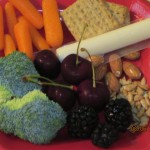 Those are familiar words for most of us with kids. Though they are not really starving, most children do need a little afternoon boost when they come home from school. It may have been hours since lunch and dinner won’t be ready for a while. A healthy snack is usually just the right answer.
Those are familiar words for most of us with kids. Though they are not really starving, most children do need a little afternoon boost when they come home from school. It may have been hours since lunch and dinner won’t be ready for a while. A healthy snack is usually just the right answer.
When planning afterschool snacks, think of them as the fourth meal of the day or as a mini-meal. Hopefully, you wouldn’t plan a dinner of just potato chips or candy, so why plan snacks that way? Use the food groups from MyPlate to help you plan healthy, ready-to-eat snacks from each food group.
- Fruit – Have a bowl of fruit on the counter always at the ready. Keep a pre-cut fruit salad or peeled oranges in the refrigerator. Make 100% fruit juice popsicles.
- Vegetables – Keep cut up veggies available in plastic zippered bags with kid-friendly dips like ranch dressing to go with them.
- Protein – A variety of nuts and seeds is always good to have on hand. Hard boiled eggs offer great protein power as well.
- Dairy – String cheese and yogurt cups are terrific dairy sources.
- Whole Grains – Whole grain crackers, popcorn, and granola mix add plenty of crunch.
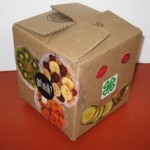 “Easy” and “available” are the key planning points to remember. Designate a snack area in the refrigerator or pantry. Decorate a personalized snack box for each child filled with favorite healthy snacks. A healthy variety of snacks always at the ready holds our child’s interest, provides the much needed energy to close the gap between lunch and dinner, provides nutrients they may not have gotten from other meals in the day, and keeps them from … well, starving.
“Easy” and “available” are the key planning points to remember. Designate a snack area in the refrigerator or pantry. Decorate a personalized snack box for each child filled with favorite healthy snacks. A healthy variety of snacks always at the ready holds our child’s interest, provides the much needed energy to close the gap between lunch and dinner, provides nutrients they may not have gotten from other meals in the day, and keeps them from … well, starving.

by Dorothy C. Lee | Jul 25, 2012
This may sound like a fish story, but it’s true! People are eating more fish and shellfish than ever before! While seafood has always been popular in the South as a whole, no area is more graciously endowed with an abundance of fresh seafood products than the northern Gulf Coast. The warm waters of the Gulf of Mexico abound with many delicious saltwater fish, as well as a plentiful supply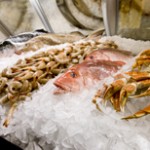 of shrimp, crabs, scallops, and oysters.
of shrimp, crabs, scallops, and oysters.
Fish and shellfish have become an even more important part of the diet as people turn to more healthful eating. People are choosing fish and shellfish more for several other reasons as well—it is economical, high in nutritive value, quick and easy to prepare, versatile, and, best of all, seafood is great-tasting.
Buying seafood can be a daunting process because of the huge variety of market forms available, yet with general guidelines you can easily learn to recognize quality and freshness.
Always purchase your fish and shellfish from a reliable dealer who will stake his reputation on the quality and freshness of his merchandise. Seafood is a highly perishable commodity, and therefore should be purchased as near to the time of preparation as possible, and as close to the time the catch was made, if that information is available.
When buying fish, look for bright, clear, bulging eyes; reddish or pink gills; tight, shiny scales; firm, elastic flesh that springs back when pressed; and a pleasant salt-water-like odor. Fresh shrimp should be slightly green in color and firm to the touch. Shucked oysters should be plump with no evidence of shrinkage. The liquid in which oysters are packed should be clean, fresh, and sweet-smelling. Scallops are usually sold shucked. Select scallops that are cream-colored rather than white.
Fish and shellfish are best if cooked the day of purchase, but can be stored no more than two days in the coldest part of the refrigerator, preferably on ice. Frozen fish and shellfish should be kept solidly frozen until ready to thaw. Frozen seafood will remain fresh for four to six months. Cook seafood immediately upon thawing. Never refreeze seafood.
Most fish and shellfish can be cooked using a variety of methods. Seafood can be broiled, grilled, deep-fried, poached, steamed, baked, panfried, and sautéed. Particular care must be taken not to overcook seafood.
Many seafood aficionados/enthusiasts prefer flavoring their dishes with only small amounts of salt, pepper, and occasionally lemon, yet the delicate taste of seafood blends exceptionally well with a variety of herbs, spices and seeds, as long as those seasonings are used sparingly so as not to overwhelm the flavor of the seafood.
So the next time you are in the neighborhood of your favorite seafood market, stop in. Remember that fish and shellfish from the Gulf are nutritious, economical, quick and easy to prepare, and taste great. And that’s no fish story!
SWEET-AND-SOUR SHRIMP
1 pound shrimp, cooked, peeled, and deveined
¼ cup margarine
1 onion, thinly sliced
1 bell pepper, diced
1 (8¼-ounce) can pineapple chunks
½ cup white vinegar
¼ cup white sugar
2 tablespoons cornstarch
1 tablespoon soy sauce
½ teaspoon dry mustard
1 teaspoon pepper
¼ teaspoon salt
Cut shrimp into bite-sized pieces. Heat electric wok to 350°F and melt margarine; cook onions and bell peppers until they are crisp-tender.
Drain pineapple, reserving syrup for sauce. In a large bowl blend together pineapple syrup, vinegar, sugar, cornstarch, soy sauce, dry mustard, pepper, and salt. Mix well. (Note: a whisk will aid in thoroughly blending ingredients.)
Stir sauce into sautéing onion and bell pepper; cook until sauce thickens. Gently stir in pineapple chunks and shrimp. Heat until pineapple and shrimp are hot. Serve over hot rice.
Author: Dorothy C. Lee, Family and Consumer Sciences Agent, UF/IFAS Escambia County Extension








